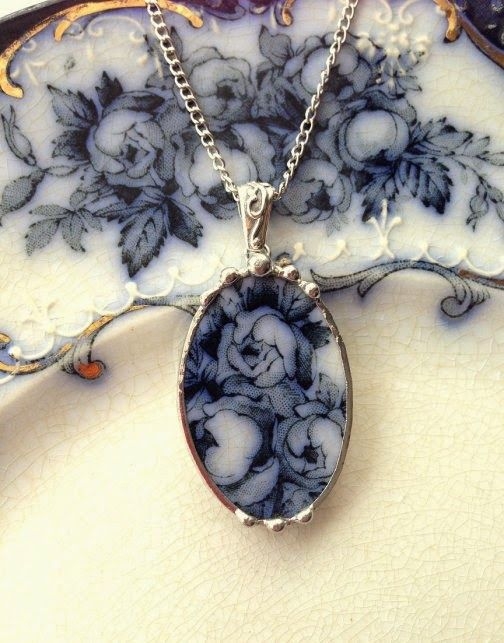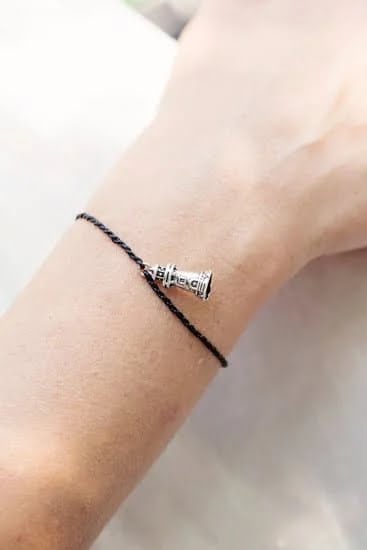The history of jewelry in Japan is a reflection of the rich cultural and artistic traditions that have been passed down through centuries. From ancient techniques to modern trends, Japanese jewelry showcases the country’s unique aesthetic and ingenuity.
This article delves into the fascinating history and influence of Japanese jewelry, exploring its ancient traditions and techniques, the impact of Japanese culture on design, the evolution of styles, the significance of jewelry in society, notable historical pieces, Western influences, and modern trends.
Ancient Japan was known for its exquisite craftsmanship and attention to detail in creating jewelry. Techniques such as metalwork, lacquerware, and gemstone cutting have been perfected over generations, contributing to Japan’s distinct style in jewelry making. The influence of nature and traditional symbols can be seen in many designs, reflecting the spiritual connection between the people and their surroundings.
Japanese culture has played a significant role in shaping the design of jewelry, with elements such as Zen Buddhism, tea ceremonies, and Kabuki theater influencing artistic expression. Throughout history, jewelry has held special cultural significance in Japanese society as a symbol of status, spirituality, and tradition. This enduring legacy continues to inspire designers and collectors alike.
As we delve into the intricacies of Japanese jewelry throughout history, it becomes evident that the art form has evolved with global influences while maintaining its distinctive essence. From ancient treasures to contemporary creations, Japanese jewelry continues to captivate with its timeless beauty and cultural relevance.
Ancient Traditions and Techniques
The history of jewelry in Japan can be traced back to ancient times, with the country’s rich and diverse culture playing a significant role in shaping the art of jewelry making. From early techniques and traditions to modern trends, Japanese jewelry reflects a unique blend of innovation, craftsmanship, and cultural influence.
Ancient Japanese jewelry was often characterized by intricate designs and the use of natural materials such as wood, shells, and stones. The practice of metalworking and crafting precious metals like gold and silver also dates back to early Japan, with skilled artisans creating exquisite pieces using traditional techniques that have been passed down through generations.
One notable tradition in Japanese jewelry is the art of Mokume-gane, which involves layering different colored metals together to create intricate patterns reminiscent of wood grain. This technique has been used for centuries to produce stunning pieces that showcase the expertise and artistry of Japanese craftsmen.
In addition to its unique techniques, ancient Japanese jewelry also drew inspiration from nature, folklore, and religious symbolism. Designs often featured motifs such as cherry blossoms, dragons, and phoenixes, reflecting the deep connection between Japanese culture and the natural world. These influences continue to shape modern Japanese jewelry design, making it a testament to the enduring legacy of tradition and culture in the art form.
Influence of Japanese Culture on Jewelry Design
Traditional Symbols and Motifs
Japanese culture has had a profound impact on the design of traditional jewelry. From ancient times, symbols and motifs such as cherry blossoms, dragons, koi fish, and cranes have been prevalent in Japanese jewelry design. These symbols are often deeply rooted in Japanese folklore, mythology, and spirituality, and are believed to bring good luck, protection, and prosperity to the wearer.
Meticulous Craftsmanship
One of the most significant influences of Japanese culture on jewelry design is the emphasis on meticulous craftsmanship. Traditional Japanese jewelry is known for its exceptional attention to detail, intricate metalwork, and exquisite enameling techniques. Artisans in Japan have long been revered for their dedication to perfection and their ability to create pieces that are not only beautiful but also incredibly durable.
Aesthetic Sensibilities
The aesthetics of Japanese culture have also left a lasting mark on the design of jewelry. The concept of wabi-sabi, which embraces imperfection and impermanence, has influenced the way that Japanese jewelry is created and appreciated. This can be seen in the use of irregular shapes or asymmetrical designs in traditional pieces. Additionally, the minimalism and simplicity often associated with Japanese art can be observed in the clean lines and understated elegance of many traditional Japanese jewelry designs.
The influence of Japanese culture on jewelry design has shaped not only the physical appearance of these adornments but also their deeper symbolism and meaning. As Japan continues to modernize while preserving its rich traditions, this influence remains palpable in both historical artifacts and contemporary jewelry creations.
Evolution of Jewelry Styles in Japan
Throughout history, the evolution of jewelry styles in Japan has been influenced by a variety of factors including cultural shifts and outside influences. Traditional Japanese jewelry often featured materials like pearls, precious metals, and gemstones such as jade and coral. These materials were not only valued for their beauty but also held symbolic significance in Japanese culture.
During the Edo period (1603-1868), there was a shift towards more intricate and ornate designs in Japanese jewelry. This era saw the rise of ornamental hairpins, combs, and kanzashi (decorative hair ornaments) adorned with intricate patterns and motifs inspired by nature. Additionally, with the increasing popularity of ukiyo-e woodblock prints, jewelry designs began to incorporate elements from this art form, resulting in pieces that reflected the trends of the time.
In the modern era, Japanese jewelry has continued to evolve with contemporary designs blending traditional techniques with modern influences. From minimalist and understated pieces to bold and avant-garde creations, Japanese jewelry designers have pushed boundaries and redefined traditional notions of beauty and style.
To further illustrate the evolution of jewelry styles in Japan, we can look at some notable historical pieces such as the Magatama beads or the Inro boxes, which not only showcase exquisite craftsmanship but also reflect the changing tastes and preferences of different time periods in Japanese history.
| Japanese Jewelry Period | Main Characteristics |
|---|---|
| Edo period (1603-1868) | Intricate designs influenced by nature; incorporation of ukiyo-e art |
| Modern era | Blend of traditional techniques with contemporary influences; from minimalism to avant-garde designs |
Significance of Jewelry in Japanese Society
Jewelry has always held a significant role in Japanese society, with a rich history dating back centuries. Here are some key aspects of the significance of jewelry in Japanese culture:
- Symbolism: In Japan, jewelry is often imbued with deep symbolism and meaning. For example, the giving and receiving of traditional Japanese jewelry such as the “magatama” were seen as a sign of protection and good luck. Similarly, certain motifs and designs in jewelry, such as cherry blossoms or cranes, hold symbolic significance representing love, beauty, and longevity.
- Social Status: Historically, jewelry was also an indicator of social status in Japanese society. Members of the aristocracy would adorn themselves with elaborate pieces made from precious metals and gemstones to display their wealth and influence.
- Traditional Ceremonies: Jewelry plays a crucial role in various traditional Japanese ceremonies and celebrations. For example, during weddings, brides would wear intricate hair ornaments called “kushi” or “kanzashi” to symbolize purity and celebrate the auspicious occasion.
The history Japan of jewelry reflects the enduring importance of these accessories in Japanese culture. Today, while modern influences have shaped contemporary jewelry trends in Japan, these traditional values continue to influence the design and significance of jewelry in Japanese society.
Notable Historical Japanese Jewelry Pieces
Throughout the rich history of Japan, the art of jewelry-making has played a significant role in the country’s cultural and social traditions. Notable historical Japanese jewelry pieces have not only showcased exquisite craftsmanship and creativity but also reflected the values and beliefs of Japanese society.
Ancient Jewelry Artifacts
Dating back to as early as the Jomon period (approximately 14,000-300 BC), archaeologists have unearthed artifacts such as beads made from shells, bones, and stones. These ancient jewelry items provide valuable insights into the early practices of adornment and personal ornamentation in Japan.
As time progressed, the arrival of Buddhism in Japan during the 6th century brought with it new techniques for metalworking, leading to the creation of intricate metal jewelry pieces that were often adorned with religious symbols.
Samurai Armor and Accessories
During the feudal era of Japan, particularly throughout the Edo period (1603-1868), elaborate armor and accessories worn by samurai warriors also functioned as notable forms of jewelry. The craftsmanship involved in creating these armor pieces was unparalleled, with intricate designs that symbolized power and status. Swords, known as “katana,” were also adorned with ornate fittings that often displayed exceptional skill in metalworking.
Kimono Accessories
In traditional Japanese culture, kimono attire was accessorized with various types of jewelry. “Kanzashi” hair ornaments made from lacquered wood or metal became popular during this time, showcasing delicate designs that complemented the elegant simplicity of Japanese clothing. Additionally, “netsuke” toggles were used to secure items suspended from sashes or obi belts on kimonos, serving both a practical function and an artistic one through their intricate carvings.
The historical significance of these notable Japanese jewelry pieces highlights their enduring legacy within Japanese society and how they continue to influence modern trends in jewelry design.
Impact of Western Influences on Japanese Jewelry
The impact of Western influences on Japanese jewelry has been significant, especially during the Meiji period in the late 19th century. At this time, Japan opened its doors to the world after more than two centuries of isolation and experienced an influx of new ideas and styles from the West. This had a profound impact on Japanese jewelry design, as artisans began incorporating Western techniques and materials into their traditional craftsmanship.
During the Meiji period, Japanese jewelry saw a shift towards using gemstones such as diamonds, rubies, and sapphires, which were previously not commonly used in Japanese jewelry making. This was a direct result of exposure to Western styles and preferences. Additionally, Western motifs and designs became increasingly popular in Japanese jewelry, blending with traditional themes to create unique pieces that reflected a fusion of cultures.
One notable example of this influence is the rise of “Japonism” in Western art and jewelry. Japanese motifs such as cherry blossoms, dragons, and fans became fashionable in Europe and America, leading to a reciprocal exchange of cultural influences. This cross-cultural pollination not only enriched Japanese jewelry design but also contributed to a greater appreciation for Japanese aesthetics on a global scale.
| Western Influences | Effect on Japanese Jewelry |
|---|---|
| Influx of new ideas and styles | Incorporation of Western techniques and materials |
| Shift towards using gemstones | Adoption of diamonds, rubies, and sapphires in jewelry making |
| Rise of “Japonism” in Western art | Growth in popularity of Japanese motifs in jewelry design worldwide |
Modern Japanese Jewelry Trends
In recent years, the Japanese jewelry industry has seen a shift towards modern and innovative designs while still embracing traditional techniques and materials. The intersection of past and present can be seen in the following trends:
1. Minimalist Designs: Many contemporary Japanese jewelry pieces are characterized by their simple and clean aesthetics. This trend reflects the influence of minimalism in Japanese culture, as well as a desire for understated elegance.
2. Fusion of Materials: A growing trend in modern Japanese jewelry is the combination of traditional materials, such as pearls and jade, with more unconventional materials like resin or acrylic. This fusion creates unique and unexpected pieces that appeal to both traditional and contemporary tastes.
3. Nature-inspired Motifs: Drawing inspiration from Japan’s natural beauty, many modern jewelry pieces incorporate motifs such as cherry blossoms, waves, and Mount Fuji. These nature-inspired designs resonate with the deep appreciation for nature in Japanese culture.
4. Emphasis on Craftsmanship: Despite the influx of modern technology in jewelry production, there is a renewed emphasis on craftsmanship in Japanese jewelry making. Artisans place great importance on precision and attention to detail, resulting in high-quality pieces that stand the test of time.
5. Sustainable Practices: With an increased global awareness of environmental issues, many modern Japanese jewelry designers are incorporating sustainability into their practices. This includes the use of ethically sourced gemstones and recycled metals to create eco-friendly pieces.
The history Japan of jewelry has undeniably shaped modern trends within the industry. As Japan continues to blend its rich cultural heritage with cutting-edge innovation, it is likely that these trends will continue to evolve and captivate audiences worldwide.
Conclusion
Japan has a rich and diverse history of jewelry, deeply rooted in ancient traditions and techniques. The influence of Japanese culture on jewelry design is unmistakable, reflected in the evolution of styles over centuries. From the significance of jewelry in Japanese society to the impact of Western influences, the history of Japan’s jewelry industry paints a colorful and intricate picture.
The enduring legacy of Japanese jewelry is evident in the notable historical pieces that have stood the test of time. These pieces not only showcase the craftsmanship and artistry of their time but also serve as a reflection of Japan’s cultural heritage. The fusion of traditional techniques with modern trends has kept Japanese jewelry relevant in today’s global market, solidifying its place in history as a timeless art form.
As we look to the future, it is clear that modern Japanese jewelry trends are influenced by both traditional values and contemporary aesthetics. The ongoing evolution and innovation within Japan’s jewelry industry continue to captivate enthusiasts around the world. Ultimately, the history of Japan’s jewelry not only reflects its cultural significance but also serves as a testament to its enduring legacy in the world of adornment and craftsmanship.
Frequently Asked Questions
What Is Japan Known for in Jewelry?
Japan is known for its traditional craftsmanship and attention to detail in jewelry making. They are particularly famous for their use of pearls, which have been a part of Japanese jewelry culture for centuries.
What Is the Oldest Japanese Jewelry?
The oldest known Japanese jewelry dates back to the Jomon period, which lasted from around 14,000 BC to 300 BC. During this era, jewelry was made from materials such as shells, bones, and stones, reflecting the natural resources available at the time.
What Does Japan Mean on Jewelry?
“Japan” on jewelry can often refer to either the country itself or indicate that the piece of jewelry was made in a Japanese style or inspired by traditional Japanese designs. It can also be used to denote the quality or authenticity of the materials and craftsmanship used in creating the piece.

Welcome to my jewelry blog! My name is Sarah and I am the owner of this blog.
I love making jewelry and sharing my creations with others.
So whether you’re someone who loves wearing jewelry yourself or simply enjoys learning about it, be sure to check out my blog for insightful posts on everything related to this exciting topic!





